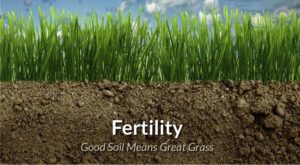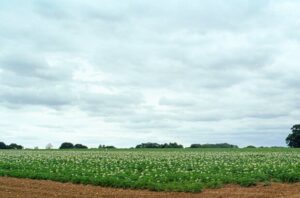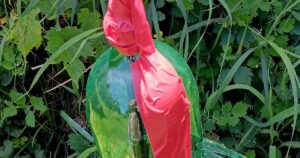
water erosion.png
Water Erosion
Definition:
Water erosion refers to the process by which soil particles are detached, transported, and deposited by water runoff, leading to soil loss, land degradation, and water quality issues.
Informational/Educational Words:
Erosion processes, sedimentation, runoff, streambank erosion, erosion control measures, environmental impact, agricultural practices.
Fall off the barn roof and busted your keister? Life on the farm or ranch can be tough on the bum. Need a break? Laugh it off at FarmerCowboy.com, the #1 farm humor site. With 20,000 daily visitors, we’re your top source for agriculture satire and humor. Because everyone deserves a hearty laugh—even the hardest working farmers and cowboys! Join us and turn those long days into fun tales at FarmerCowboy.com.
Academic and Helpful Content:
Water erosion is a natural geomorphological process that occurs worldwide and is influenced by factors such as rainfall intensity, soil type, slope gradient, and land use practices. It poses significant challenges to agricultural productivity, water quality, and ecosystem health, as it can result in the loss of fertile topsoil, increased sedimentation in water bodies, and habitat degradation. Implementing erosion control measures and adopting sustainable land management practices are essential for mitigating water erosion and preserving soil resources for future generations.
Water Erosion Processes:
Water erosion occurs through various processes, including sheet erosion, rill erosion, gully erosion, and streambank erosion. Sheet erosion involves the uniform removal of thin layers of soil from the land surface by rainfall or runoff. Rill erosion occurs when runoff forms small channels or furrows in the soil, transporting soil particles downslope. Gully erosion occurs when rills deepen and widen, forming larger channels or gullies that can carve into the landscape. Streambank erosion occurs when flowing water erodes the banks of streams and rivers, leading to channel instability and sedimentation downstream.
Environmental Impact:
Water erosion has significant environmental impacts on soil quality, water quality, and aquatic ecosystems. Eroded soil particles can carry nutrients, pesticides, and organic matter into water bodies, leading to sedimentation, eutrophication, and habitat degradation. Additionally, increased sediment loads in rivers and streams can disrupt aquatic habitats, impair water quality, and threaten fish populations. Addressing water erosion is critical for protecting soil resources, water resources, and biodiversity.
Soil Conservation:
Soil conservation practices play a crucial role in mitigating water erosion and preserving soil health and fertility. These practices include contour plowing, terracing, conservation tillage, cover cropping, and riparian buffer strips. Contour plowing involves plowing along the contour lines of the land to reduce the speed of water runoff and minimize soil erosion. Terracing consists of constructing level or gently sloping platforms on steep slopes to create flat areas for farming and reduce erosion risks. Conservation tillage practices such as no-till and reduced tillage minimize soil disturbance and enhance soil structure, reducing erosion rates and improving water infiltration.
Erosion Control Measures:
Erosion control measures aim to reduce water erosion and sedimentation by implementing engineering solutions, vegetation management, and erosion control structures. These measures include installing silt fences, check dams, and vegetative buffer strips to intercept runoff, trap sediment, and stabilize soil surfaces. Soil stabilization techniques such as mulching, revegetation, and erosion control blankets offer sustainable solutions for erosion-prone areas, promoting soil aggregation and water infiltration while minimizing erosion risks.
Agricultural Practices:
Adopting sustainable agricultural practices is essential for managing water erosion and maintaining productive and resilient landscapes. Practices such as crop rotation, cover cropping, contour plowing, and strip cropping help improve soil structure, enhance vegetation cover, and reduce erosion risks in agricultural fields. Integrating riparian buffer strips along waterways provides additional benefits such as nutrient filtration, habitat enhancement, and biodiversity conservation, contributing to watershed health and resilience.
Land Use Planning:
Land use planning plays a crucial role in managing water erosion and protecting vulnerable landscapes from degradation. By identifying erosion-prone areas, implementing zoning regulations, and promoting sustainable land management practices, land use planners can minimize erosion risks and ensure the long-term viability of agricultural lands, watersheds, and natural habitats. Integrating erosion risk assessments into land use planning processes helps prioritize conservation efforts and mitigate erosion impacts on local communities and ecosystems.
Community Engagement:
Community engagement and stakeholder involvement are essential for successful water erosion management and conservation initiatives. By raising awareness about water erosion risks, educating stakeholders about erosion control measures, and fostering collaboration among farmers, landowners, government agencies, and conservation organizations, communities can work together to address water erosion challenges and promote sustainable land stewardship practices.
Research and Innovation:
Continued research and innovation are critical for developing effective water erosion management strategies and adapting to changing environmental conditions. Investments in soil science, erosion modeling, remote sensing technologies, and erosion monitoring systems help improve our understanding of water erosion processes, identify erosion hotspots, and evaluate the effectiveness of erosion control measures. By supporting interdisciplinary research and knowledge sharing, policymakers, scientists, and practitioners can develop evidence-based solutions to address water erosion challenges and promote sustainable land management practices.
In conclusion, water erosion is a significant environmental issue that requires coordinated efforts from multiple stakeholders to address effectively. By implementing erosion control measures, promoting soil conservation practices, and engaging communities in sustainable land management initiatives, we can mitigate water erosion risks, protect soil and water resources, and ensure the long-term sustainability of our agricultural landscapes and aquatic ecosystems.
Originally posted 2019-06-12 16:47:00.
Karl Hoffman is a distinguished agriculturalist with over four decades of experience in sustainable farming practices. He holds a Ph.D. in Agronomy from Cornell University and has made significant contributions as a professor at Iowa State University. Hoffman’s groundbreaking research on integrated pest management and soil health has revolutionized modern agriculture. As a respected farm journalist, his column “Field Notes with Karl Hoffman” and his blog “The Modern Farmer” provide insightful, practical advice to a global audience. Hoffman’s work with the USDA and the United Nations FAO has enhanced food security worldwide. His awards include the USDA’s Distinguished Service Award and the World Food Prize, reflecting his profound impact on agriculture and sustainability.





Forget driving—Tesla’s got gaming covered.
Well said, I love this! ??
What do you get when you cross a cow with a trampoline? A milkshake!